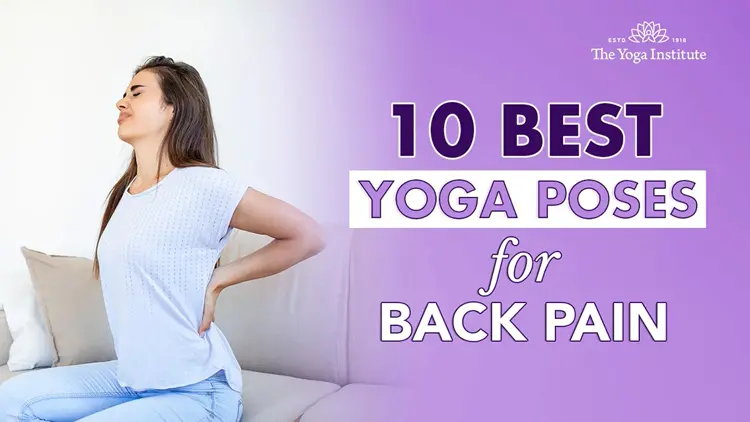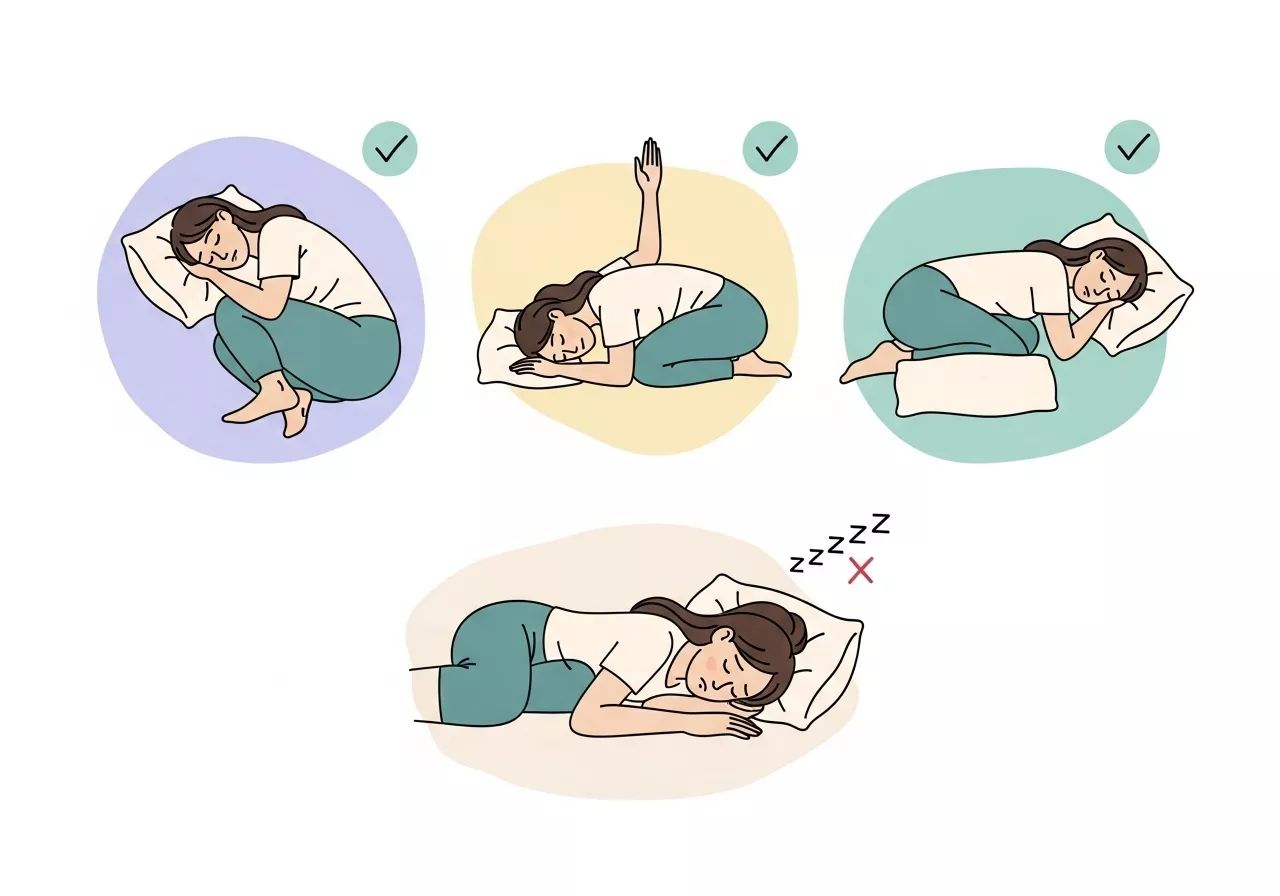Lower back pain often stems from factors like poor posture, prolonged sitting, improper lifting techniques, muscle strains, or conditions such as herniated discs and arthritis.
Understanding these causes is crucial for effective management and prevention.

Incorporating specific yoga poses into your routine can alleviate discomfort and enhance your quality of life. Here are ten beneficial poses:
1. Cat-Cow Pose (Marjaryasana-Bitilasana)
This dynamic stretch involves alternating between arching and rounding the spine, enhancing flexibility and promoting spinal mobility.
The Cat-Cow Pose helps warm up the back muscles and improves posture by increasing awareness of your spinal alignment.
It also reduces stiffness in the lower back, making it ideal for people experiencing pain from prolonged sitting.

Advantages:
- Improves spinal flexibility and posture.
- Relieves tension in the lower back and warms up the spine.
- Enhances core strength, reducing strain on the back.
Disadvantages:
- Overarching the back can cause discomfort if done incorrectly.
- Those with severe neck or wrist pain may find this pose challenging.
2. Child’s Pose (Balasana)
Child’s Pose provides a gentle stretch for the lower back, hips, and thighs. By folding forward and reaching your arms out, this pose allows the spine to decompress, releasing tension in the lower back.

It’s also deeply calming for the nervous system, making it a great position to use for relaxation or after other, more intense poses.
Advantages:
- Gently stretches the lower back, hips, and thighs.
- Decompresses the spine and promotes relaxation.
- Helps reduce stress and anxiety.
Disadvantages:
- Can strain the knees if not properly supported.
- May cause discomfort in the lower back if hips are very tight.
3. Downward-Facing Dog (Adho Mukha Svanasana)
This foundational yoga pose stretches the hamstrings, calves, and back while elongating the spine.
By pressing your hips upward and forming an inverted V-shape, you create space in the vertebrae and improve circulation to the lower back.
This posture is especially beneficial for relieving pressure caused by poor posture or tightness in the legs.

Advantages:
- Stretches and strengthens the entire body, including the spine and hamstrings.
- Relieves tension caused by prolonged sitting.
- Improves circulation and spinal alignment.
Disadvantages:
- Requires strong wrists and shoulders, which can be difficult for beginners.
- Can aggravate wrist or lower back injuries if done improperly.
4. Seated Forward Bend (Paschimottanasana)
This pose stretches the entire back of the body, particularly the spine, hamstrings, and calves.
By folding forward from the hips and reaching toward your feet, you elongate the spine, which can alleviate lower back compression.
This pose also helps relax the mind, promoting overall stress relief.

Advantages:
- Elongates the spine and stretches the hamstrings and calves.
- Encourages relaxation and reduces stress.
- Helps to decompress the lower back.
Disadvantages:
- Tight hamstrings can limit the range of motion, leading to poor alignment.
- Overstretching may strain the lower back if not done mindfully.
5. Bridge Pose (Setu Bandhasana)
Bridge Pose strengthens the glutes, hamstrings, and lower back while opening up the chest and shoulders.
By lifting your hips and engaging your core, you create a stretch in the spine that can reduce stiffness and improve overall posture.
This pose is particularly effective in combating the effects of prolonged sitting.

Advantages:
- Strengthens the glutes, hamstrings, and lower back muscles.
- Improves posture and opens the chest, reducing slouching.
- Relieves lower back stiffness.
Disadvantages:
- May cause strain in the neck or lower back if alignment is incorrect.
- Those with neck injuries should avoid this pose or modify it.
6. Reclining Spinal Twist (Supta Matsyendrasana)
This gentle twist relaxes the lower back and improves spinal mobility.
By lying on your back and twisting your knees to one side, you stretch the muscles along the spine and alleviate tension.
Twists also stimulate the internal organs, promoting detoxification and relaxation.

Advantages:
- Gently stretches the spine and relieves tension in the lower back.
- Improves spinal mobility and digestion.
- Helps to relax the nervous system.
Disadvantages:
- Twisting too deeply may strain the lower back or hips.
- Not suitable for individuals with severe spinal injuries.
7. Pigeon Pose (Eka Pada Rajakapotasana)
Pigeon Pose targets the hip flexors and rotators, areas that often contribute to lower back pain when tight.
By stretching the hips deeply, this pose can release built-up tension and improve flexibility.
A flexible hip region reduces strain on the lower back, making this pose essential for those with chronic back pain.

Advantages:
- Deeply stretches the hip flexors and rotators, reducing lower back strain.
- Improves hip flexibility and mobility.
- Alleviates tension caused by sitting for long periods.
Disadvantages:
- May be too intense for individuals with very tight hips or knees.
- Can strain the knee joint if proper alignment is not maintained.
8. Standing Forward Bend (Uttanasana)
This standing pose provides an intense stretch for the hamstrings, calves, and lower back.
By folding forward and letting your head hang, you elongate the spine and promote relaxation.
This pose can also help reduce stress and improve blood circulation, bringing relief to a tired or achy lower back.

Advantages:
- Stretches the hamstrings, calves, and lower back.
- Promotes relaxation and relieves stress.
- Improves blood circulation and flexibility.
Disadvantages:
- Tight hamstrings can lead to rounding of the spine, causing strain.
- Overstretching can lead to lower back or hamstring injuries.
9. Cobra Pose (Bhujangasana)
Cobra Pose is excellent for strengthening the spine while gently opening the chest and shoulders.
By lifting your upper body off the ground and extending your back, you improve spinal flexibility and reduce stiffness.
This pose is particularly beneficial for counteracting slouching or poor posture.

Advantages:
- Strengthens the spine and opens the chest and shoulders.
- Reduces stiffness and improves posture.
- Helps counteract slouching or poor sitting habits.
Disadvantages:
- Overarching the back can lead to compression in the lower spine.
- Individuals with severe lower back pain or injuries should perform this pose cautiously.
10. Legs-Up-the-Wall Pose (Viparita Karani)
This restorative pose promotes relaxation and reduces lower back discomfort by allowing gravity to relieve tension.
By lying on your back and extending your legs up a wall, you encourage blood flow away from the lower body, which can reduce inflammation and soothe the back.
It’s also excellent for calming the mind and relieving stress.

Advantages:
- Promotes relaxation and reduces lower back tension.
- Encourages circulation and helps reduce swelling in the legs.
- Soothes the nervous system, aiding in stress relief.
Disadvantages:
- May feel uncomfortable for those with tight hamstrings.
- Not recommended for individuals with glaucoma or elevated eye pressure.
Practicing these poses regularly can significantly improve your lower back health. Remember to approach each pose mindfully and listen to your body’s signals to avoid overstretching or injury.



